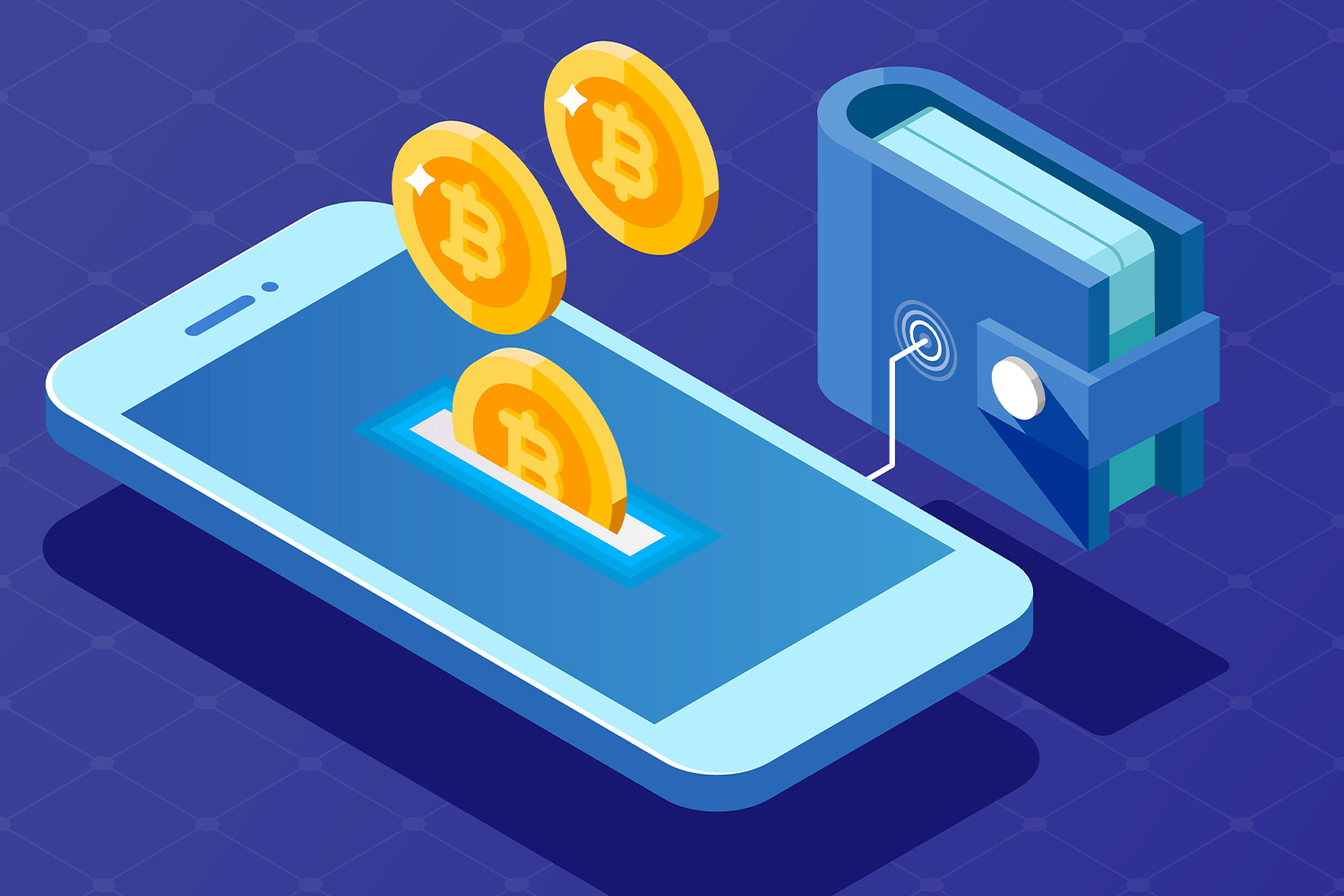The general conception of crypto often begins with Bitcoin, but hundreds of other cryptocurrencies exist in today’s market.
Each one operates within a particular network, which can complicate ownership if you own more than one type of cryptocurrency. If that’s the case, a cryptocurrency wallet could be the solution you’re looking for.
Owning one or more cryptocurrencies requires storing them safely. Commensurate with the rise of cryptocurrencies, digital wallets abound when it comes to offering consumers the best way to hold crypto assets and manage them.
Choosing between these wallets and knowing how to set up a wallet can be tricky. After all, how much technical knowledge does it take to create a crypto wallet?
The truth of the matter shows that creating a crypto wallet takes nothing more than signing up with a third-party service and depositing funds to get started.
Our guide includes step-by-step instructions to show you how to set up your new cryptocurrency wallet, no matter which type you choose. You may even open up several wallets to accommodate your latest holdings.
What Is a Cryptocurrency Wallet
Cryptocurrency wallets came to be due to a need to maintain ownership of one or more crypto assets.
Think of cryptocurrency wallets as e-wallets restricted to digital assets that don’t link to traditional financial accounts. These electronic billfolds provide reliable storage solutions and access to ownership of several tokens in one convenient account.
With a cryptocurrency wallet, you can quickly move tokens from one user to another through smart contracts executed with blockchain technology. However, despite popular conception, these particular wallets do not contain cryptocurrency assets.
Instead, they link to a blockchain section that stores a record of transactions, such as acquisitions and transfers. Users access this record through public and private keys.
Public Keys vs. Private Keys
Though cryptocurrency wallets can be apps, browser extensions, or physical products, they all require secure authentication in the form of keys. Think of these keys as passwords unique to each wallet, much like the PIN you use to access your bank funds.
Public keys denote the address of your wallet. They resemble the routing number of your bank account, specifically which bank you have an account at. Private keys go beyond your account number to pinpoint where your assets sit in the blockchain.
Failing to remember your private key(s) can result in the irreversible loss of your cryptocurrency assets. Hackers with your private key(s) control your assets when they gain access. A private key can only be as safe as you make it.
Types of Cryptocurrency Wallets
Discriminating between cryptocurrency wallets requires an understanding of the various types available. One quick distinction is the difference between hardware wallets and software wallets. A hardware device isn’t quite a paper wallet, but it is physical.
Software wallets are the traditional smart wallets associated with the digital currency ecosystem, allowing the purchase of NFTs on open-source crypto exchanges and ownership of Ethereum and other cryptos on different blockchain networks.
The best type of crypto wallet for you relies heavily on what you want to do with your assets and how secure you want them to be while doing so.
Hot and Cold Crypto Wallets
Hot and cold crypto wallets translate to software and hardware, respectively. You can choose from a variety of hot crypto wallets, but when it comes to cold wallets, your options include physical products.
Let’s first take a look at the many types of hot crypto wallets:
- Desktop: Desktop wallets exist in the computer’s memory and offer a high level of security. Most of these wallets work with several of the most popular operating systems, which set the tone for security measures to keep data away from prying eyes.
- Web-based: Web-based wallets are browser extensions. These hot crypto wallets directly connect with decentralized finance products by leveraging CPU output. These common crypto wallets remain less secure than others, though they don’t store private keys on the central server.
- Mobile app: Mobile wallets give investors quick access to their funds for everyday transactions and purchases. Most crypto investors have a mobile device, so mobile wallets are an accessible and user-friendly option. However, they still come up against the same lack of tight security found in web-based wallets.
In contrast, cold crypto wallets store digital assets offline via paper or a physical device resembling a USB thumb drive. These wallets can be less convenient and even expensive at times.
However, cold crypto wallets support only the necessary applications, removing any hacker-preferred applications to improve security. Cold crypto wallets garner preference for investors wishing to hold cryptocurrency assets for longer.
Custodial and Non-Custodial Crypto Wallets
If we step back from cryptocurrency wallets from a format view and instead consider governance, we come up with custodial and noncustodial wallets.
These types define who has control over the assets within the wallet. You may have heard of them referred to as hosted and self-custody wallets.
- Custodial/Hosted: Like a website, third-party servers host your crypto wallet. These wallets allow you to easily set up and maintain a crypto wallet, though you do lose out on certain features self-custody wallets provide. At the same time, if you do lose your password with a hosted account, you’re not left empty-handed. Custodial accounts remain one of the more popular crypto wallets to establish.
- Non-custodial/Self-custody: A noncustodial wallet takes full advantage of decentralization to open the door to lending, yield farming, borrowing, and staking cryptocurrency, to name a few opportunities. In addition, these wallets score higher in terms of security. That said, it’s up to you to remember the password.
Depending on your crypto wallet, it may be hot/cold and custodial/non-custodial. Though many experts claim certain types take higher priority than others, the choice remains with you. Which ones fit your needs the closest?
How To Create a Cryptocurrency Wallet
The main steps in creating a cryptocurrency wallet include connecting with that wallet by navigating to a page, downloading an app, or purchasing physical storage. Then, you’ll establish security protocols to keep your cryptocurrency secure.
This often includes a seed phrase, which combines 12 random words to form a sort of password, if you will. You may also need to create a private key.
After creating your unique crypto wallet address, you’ll use this information to transfer your crypto assets. From there, you can manipulate your cryptocurrency as you see fit and the platform allows. Most crypto wallets also allow you to set up notifications, which can help with management as you grow your cryptocurrency assets.
How To Create a Hosted Crypto Wallet
Before entering personal information online, have the cryptocurrencies you want to invest in your mind or on paper. Seek out those platforms that support these cryptocurrency types to ensure your wallet works for you, not against you.
- Once you’ve picked a platform you trust, create an account. Each host will require specifics from you based on their procedures.
- Choose a secure password and set up a two-step verification to ensure your account is secure.
- The platform automatically allocates a wallet to you. You can now deposit funds and transfer cryptocurrencies.
- To purchase crypto, you can easily link a bank account or credit card and process transactions through the app.
Finding the best-hosted crypto wallet takes some research. Review ratings and customer feedback, and look for those hosted wallets that offer perks you can benefit from.
How To Create a Self-Custody Crypto Wallet
Unlike hosted crypto wallets, you won’t have to input personal information when opening a self-custody wallet. Those are the perks of working from a decentralized network.
- Navigate to the Google Play Store or The App Store to download your chosen crypto wallet app.
- Once downloaded, open the app and create your account.
- Next, create a secure password and phrase. This phrase often bears the name “seed phrase” and consists of 12 random words. Be sure to write these words down somewhere, as they’re the only key you can use to access your cryptocurrency assets.
- Set up any additional security measures you’d like.
- Transfer cryptocurrency to your account by specifying your new public key or address. Use the private key/seed phrase to verify this transaction.
Buying cryptocurrency using fiat currency can be difficult with a self-custody crypto wallet. In this case, it might be preferable to open a hosted wallet and a noncustodial one to transfer cryptocurrencies between them for optimal results.
How To Create a Cold Crypto Wallet
To create a cold crypto wallet, you’ll need to follow these steps:
- Purchase cryptocurrency wallet hardware from retailers such as Ledger and Trezor.
- Activate the wallet by plugging the device in and installing the software on your computer. Most cold crypto wallets require you to navigate to a page that initiates the download.
- Depending on which cold crypto wallet you choose, you may need to create a backup. This step protects your assets in case of failure.
- Create, save, and confirm your seed phrase.
- Establish and set any verification procedures as the device allows/you see fit. The majority of cold crypto wallets generate public and private keys for you.
- Transfer your cryptocurrency to store it.
Some of the best cryptocurrency wallets include MetaMask, Exodus, Trust Wallet, Ledger, and Trezor. You can also open a Coinbase wallet, which offers self-custody and hosted account types for free.
No matter which type of cryptocurrency wallet you choose to open or who you open it with, managing your crypto assets can be easier than you first thought. At the same time, you might be stuck wondering how to choose between all the available crypto wallets.
What To Look For in a Cryptocurrency Wallet
We’ve put together the following list of characteristics you should prioritize when deciding between cryptocurrency wallets:
- Security: Public and private keys stand between scammers and your cryptocurrency assets. In addition, two-step verification procedures and a limited-time session can also increase security.
- Supported currencies: Not all cryptocurrency wallets host the same tokens. The more currencies (fiat and crypto) a wallet accommodates, the more valuable it becomes.
- Integration: The opportunity to buy and sell cryptocurrency assets directly can make a digital asset wallet stand out from the rest. Transferring cryptocurrencies between accounts can make a huge difference, too.
- Real-time data: Converting between currencies remains critical to a cryptocurrency wallet. Failure to convert correctly can result in outrage and potential loss of profit.
- Push notifications: Wallets that send notifications to balance security threats with real-time updates. Depending on which features you choose and enable, you may even receive notifications when prices change (either in or against your favor).
- Compatibility across devices: The best cryptocurrency wallets are compatible with iOS and Android devices and various desktop operating systems.
- Remote access: Cryptocurrency wallets connected to the internet pose the highest security risk. Implementing QR codes and other ways of connecting to the blockchain without accessing the internet help keep cryptocurrency wallets safe from potential attacks and even simplify the transaction process simultaneously.
Depending on the depth and breadth of the cryptocurrency wallet you choose, you may have access to additional features. These can include calculating commissions, collaborating with decentralized exchanges, converting fiat currencies into cryptocurrencies, and even participating in staking.
Some cryptocurrency investors may find that having several accounts open at a time can increase profits, depending on your particular strategy.
Summary
Cryptocurrency wallets remain popular among developers. Developers profit when users transfer fiat currency and cryptocurrency from one form to another or even among tokens.
At the same time, cryptocurrency wallets remain one of the few ways to hold your digital assets securely. Basic Bitcoin wallets are often suitable for beginners; however, even those who own crypto already can benefit from an excellent crypto wallet.
No matter which type of cryptocurrency wallet you choose to set up, you can try your hand at this alternate investment to earn profits and gain knowledge.
If you still have questions about crypto wallets or even cryptocurrency in general, head to our blog or check out our other community resources.
American Crypto Academy is run by a team of experts, and we’re dedicated to making cryptocurrency and the blockchain easy, with educational resources and professional programs taught by carefully chosen industry professionals.
Check out the rest of our site to learn more.
Sources:
Crypto Assets and Cyber Enforcement Actions | SEC
Digital Assets | Internal Revenue Service
What To Know About Cryptocurrency and Scams | Consumer Advice





